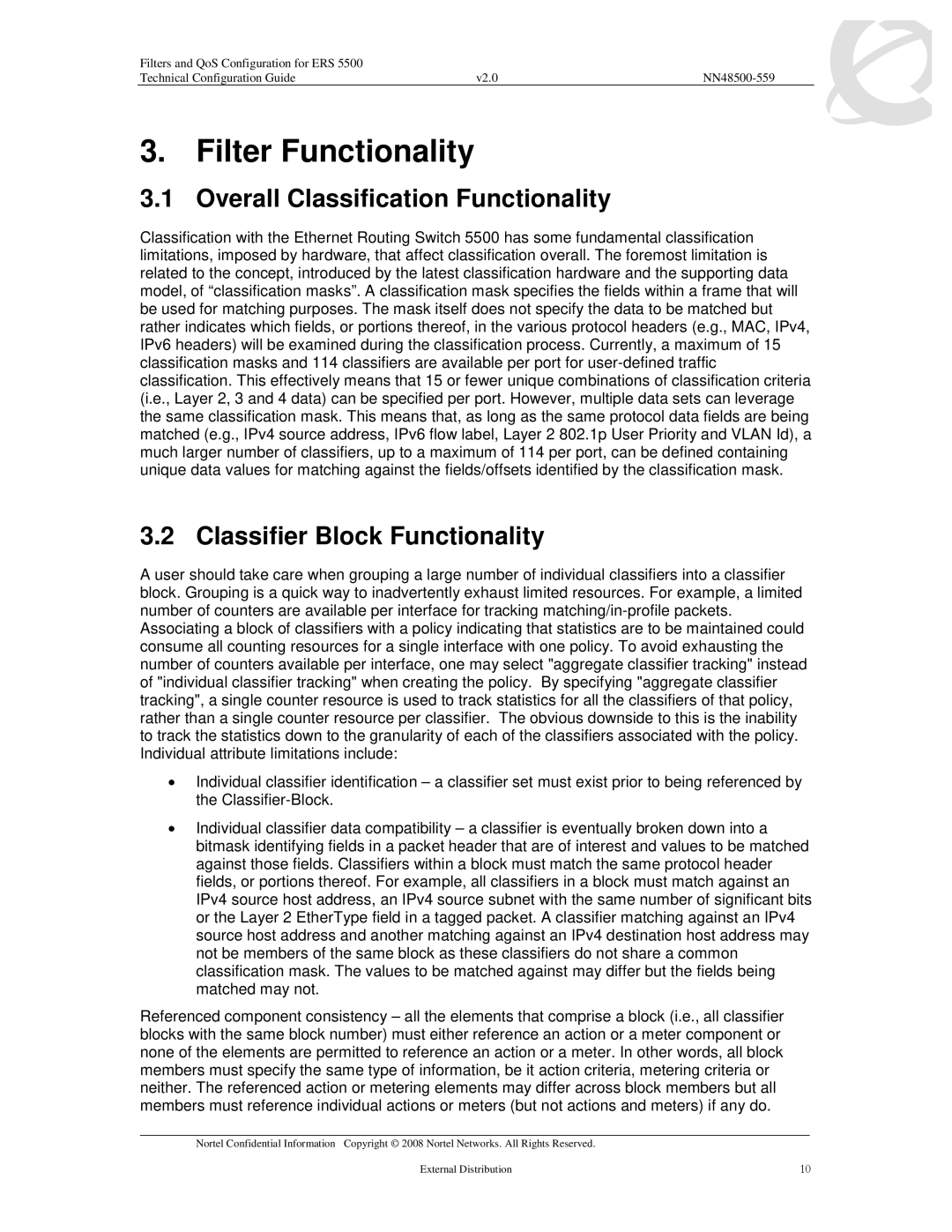
Filters and QoS Configuration for ERS 5500 |
|
|
Technical Configuration Guide | v2.0 |
|
3. Filter Functionality
3.1 Overall Classification Functionality
Classification with the Ethernet Routing Switch 5500 has some fundamental classification limitations, imposed by hardware, that affect classification overall. The foremost limitation is related to the concept, introduced by the latest classification hardware and the supporting data model, of “classification masks”. A classification mask specifies the fields within a frame that will be used for matching purposes. The mask itself does not specify the data to be matched but rather indicates which fields, or portions thereof, in the various protocol headers (e.g., MAC, IPv4, IPv6 headers) will be examined during the classification process. Currently, a maximum of 15 classification masks and 114 classifiers are available per port for
3.2 Classifier Block Functionality
A user should take care when grouping a large number of individual classifiers into a classifier block. Grouping is a quick way to inadvertently exhaust limited resources. For example, a limited number of counters are available per interface for tracking
•Individual classifier identification – a classifier set must exist prior to being referenced by the
•Individual classifier data compatibility – a classifier is eventually broken down into a bitmask identifying fields in a packet header that are of interest and values to be matched against those fields. Classifiers within a block must match the same protocol header fields, or portions thereof. For example, all classifiers in a block must match against an IPv4 source host address, an IPv4 source subnet with the same number of significant bits or the Layer 2 EtherType field in a tagged packet. A classifier matching against an IPv4 source host address and another matching against an IPv4 destination host address may not be members of the same block as these classifiers do not share a common classification mask. The values to be matched against may differ but the fields being matched may not.
Referenced component consistency – all the elements that comprise a block (i.e., all classifier blocks with the same block number) must either reference an action or a meter component or none of the elements are permitted to reference an action or a meter. In other words, all block members must specify the same type of information, be it action criteria, metering criteria or neither. The referenced action or metering elements may differ across block members but all members must reference individual actions or meters (but not actions and meters) if any do.
___________________________________________________________________________________________________________________________
Nortel Confidential Information Copyright © 2008 Nortel Networks. All Rights Reserved. |
|
External Distribution | 10 |
